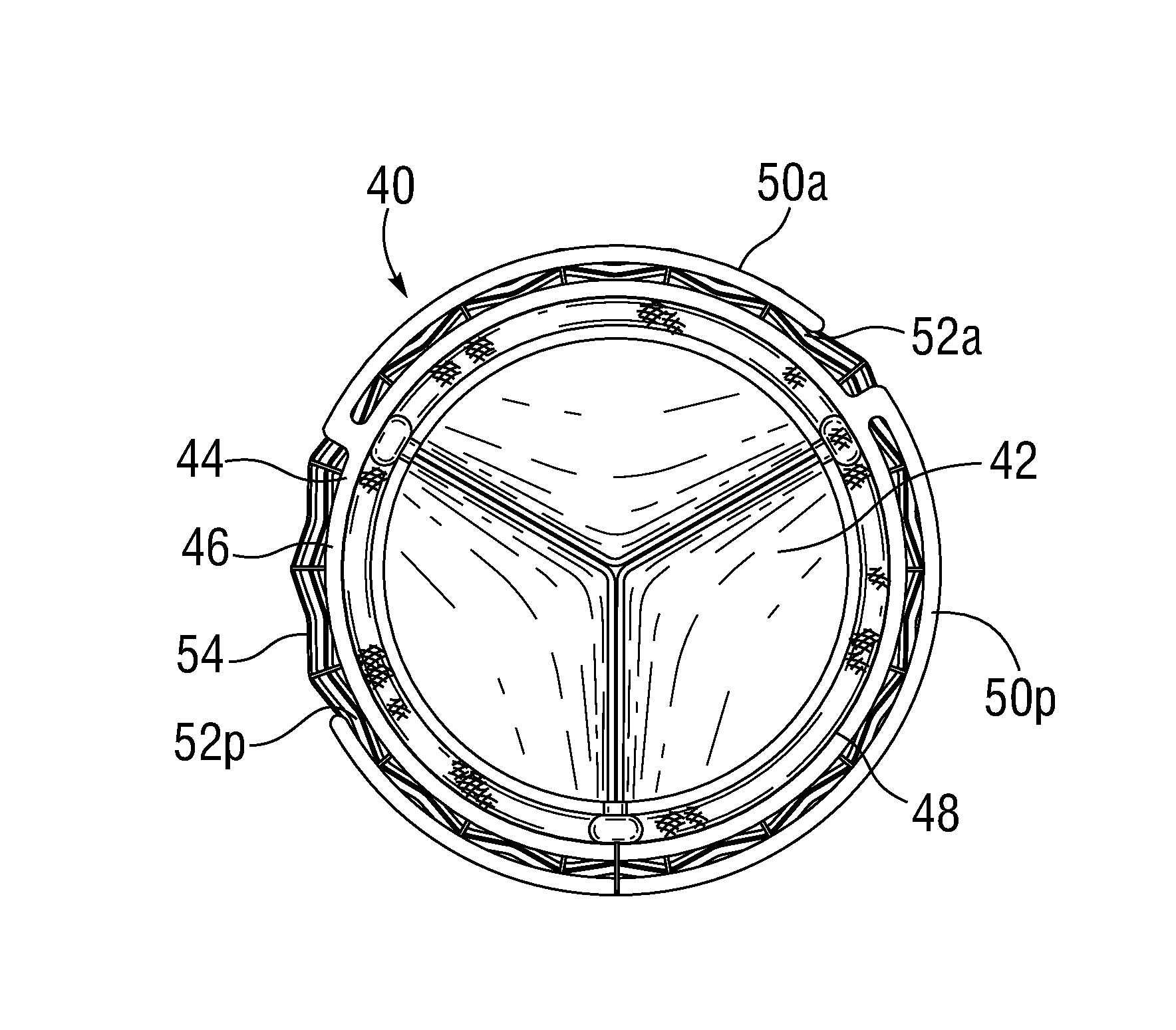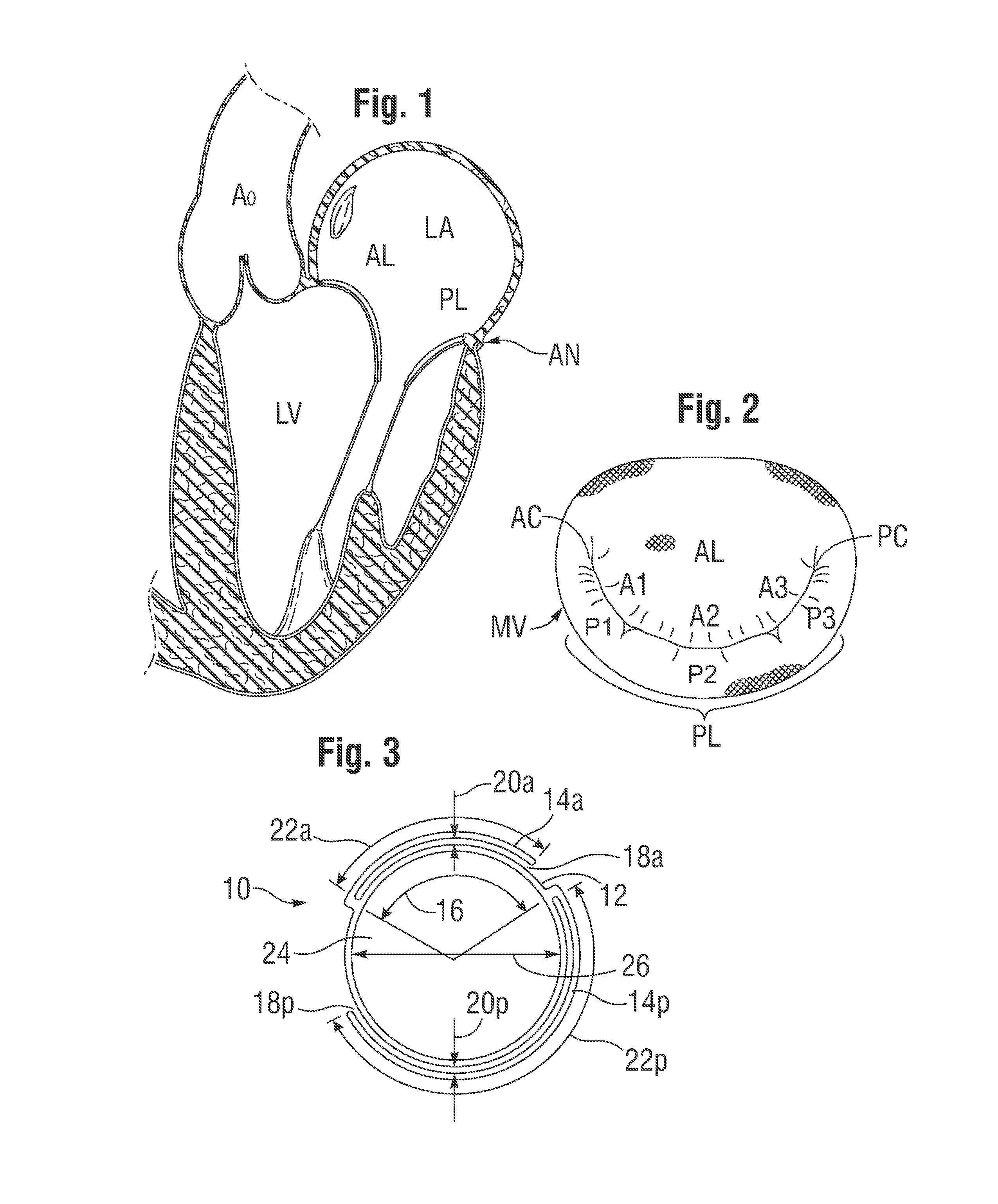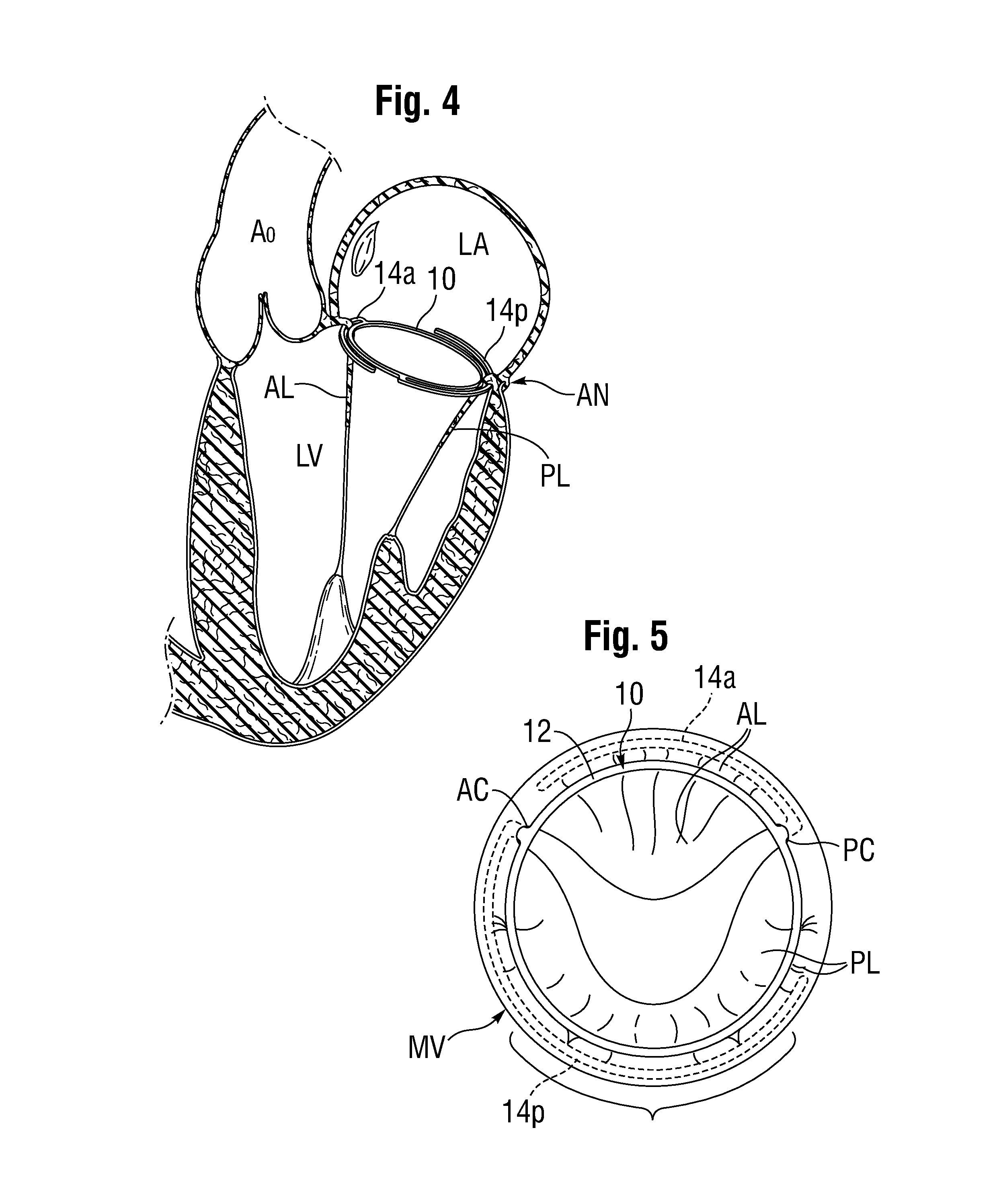Anchoring device for replacing or repairing a heart valve
a heart valve and anchoring device technology, applied in the field of anchoring devices for replacing or repairing heart valves, can solve the problems of heart valves being rendered less effective, serious cardiovascular compromise, valve disease can be severe debilitating and even fatal, and achieve different stiffness in the plane, and enhance the effect of visibility during implantation
- Summary
- Abstract
- Description
- Claims
- Application Information
AI Technical Summary
Benefits of technology
Problems solved by technology
Method used
Image
Examples
Embodiment Construction
[0049]The invention is an anchoring device, including prosthetic heart valves and annuloplasty rings and other devices using that anchoring device, for securement within a patient, such as in a native heart valve annulus in a human heart. The device has particular applicability to devices to be secured at the annulus of a valve (such as the mitral and tricuspid valves) which has subvalvular structures such as chordae tendinae. A mitral valve and its subvalvular structure are depicted in FIGS. 1 and 2.
[0050]FIG. 3 depicts a device 10 for anchoring a prosthetic heart valve or repair ring to the mitral annulus of a heart. The device 10 may be made of a metal such as stainless steel, although other materials (metal or non-metal) may be suitable. The device 10 is composed of a central ring 12 having two semi-circular anchors, namely an anterior anchor 14a and a posterior anchor 14p, attached to and extending from the central ring 12 at positions spaced apart around the circumference of t...
PUM
 Login to View More
Login to View More Abstract
Description
Claims
Application Information
 Login to View More
Login to View More - R&D
- Intellectual Property
- Life Sciences
- Materials
- Tech Scout
- Unparalleled Data Quality
- Higher Quality Content
- 60% Fewer Hallucinations
Browse by: Latest US Patents, China's latest patents, Technical Efficacy Thesaurus, Application Domain, Technology Topic, Popular Technical Reports.
© 2025 PatSnap. All rights reserved.Legal|Privacy policy|Modern Slavery Act Transparency Statement|Sitemap|About US| Contact US: help@patsnap.com



